Hall of Valor
(For Distinguished Service Cross documents, go to the bottom of the page.)
Medals of Honor
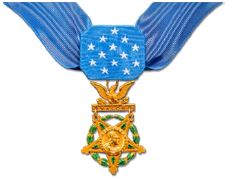
World War One – Seven awardees
Sergeant Alan Louis Eggers MG Company, 107th Infantry Regiment, 27th Infantry Division
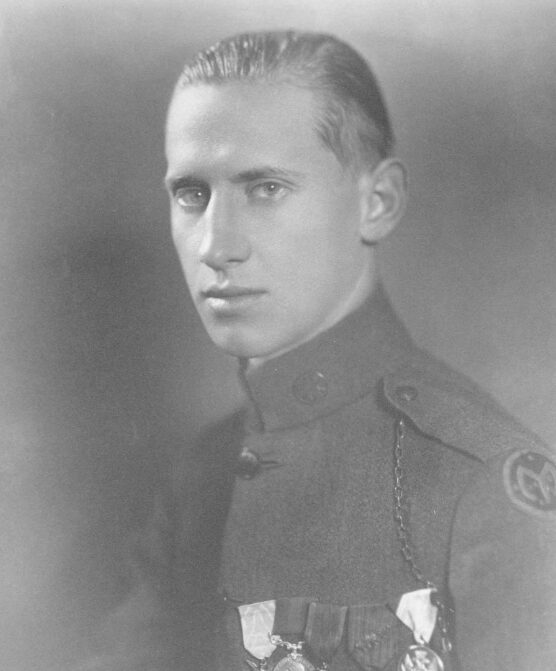
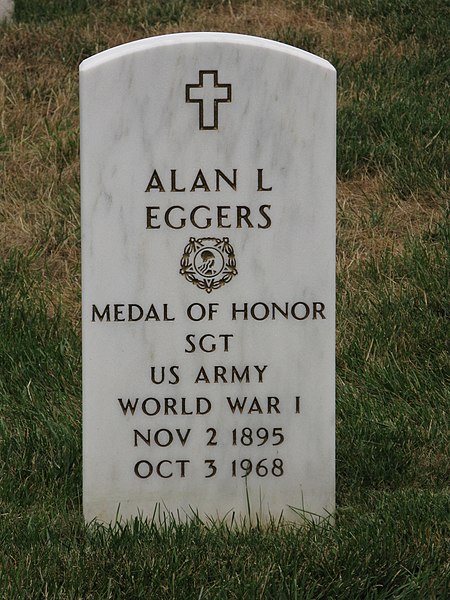
Citation: Becoming separated from their platoon by a smoke barrage, Sgt. Eggers, Sgt. John C. Latham and Cpl. Thomas E. O’Shea took cover in a shell hole well within the enemy’s lines. Upon hearing a call for help from an American tank, which had become disabled 30 yards from them, the three soldiers left their shelter and started towards the tank, under heavy fire from German machine guns and trench mortars. In crossing the fire-swept area Cpl. O’Shea was mortally wounded, but his companions, undeterred, proceeded to the tank, rescued a wounded officer, and assisted two wounded soldiers to cover in a sap of a nearby trench. Sgt. Eggers and Sgt. Latham then returned to the tank in the face of the violent fire, dismounted a Hotchkiss gun, and took it back to where the wounded men were, keeping off the enemy all day by effective use of the gun and later bringing it, with the wounded men, back to our lines under cover of darkness.
Private First Class, Frank J. Gaffney, Company G, 108th Infantry Regiment, 27th Infantry Division
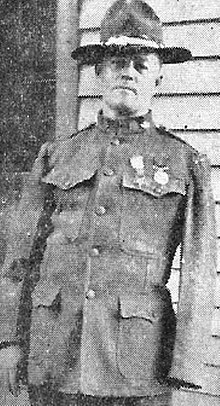
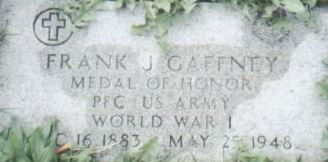
Citation: Pfc. Gaffney, an automatic rifleman, pushing forward alone, after all the other members of his squad had been killed, discovered several Germans placing a heavy machine gun in position. He killed the crew, captured the gun, bombed several dugouts, and, after killing four more of the enemy with his pistol, held the position until reinforcements came up, when 80 prisoners were captured.
Sergeant John Cridland Latham, MG Company 107th Infantry Regiment, 27th Infantry Division
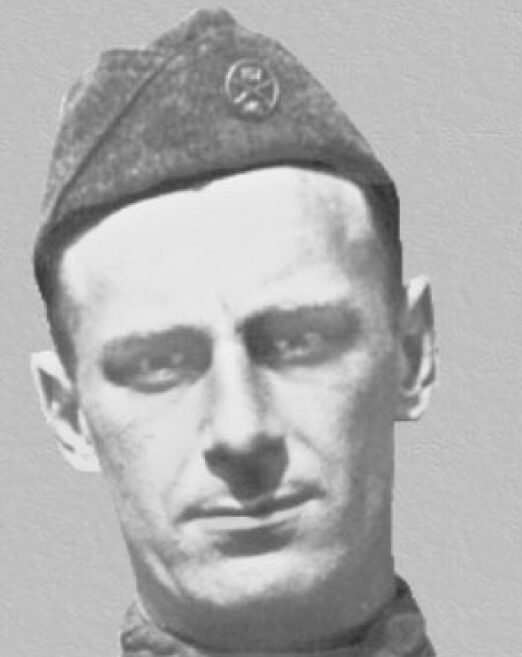
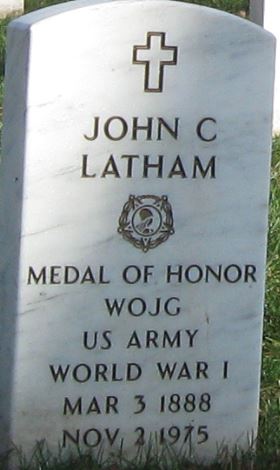
Citation: Becoming separated from their platoon by a smoke barrage, Sgt. Latham, Sgt. Alan L. Eggers, and Cpl. Thomas E. O’Shea took cover in a shellhole well within the enemy lines. Upon hearing a call for help from an American tank which had became disabled 30 yards from them, the three soldiers left their shelter and started toward the tank under heavy fire from German machine guns and trench mortars. In crossing the fire-swept area, Cpl. O’Shea was mortally wounded, but his companions, undeterred, proceeded to the tank, rescued a wounded officer, and assisted two wounded soldiers to cover in the sap of a trench nearby. Sgts. Latham and Eggers then returned to the tank in the face of violent fire, dismounted a Hotchkiss gun, and took it back where the wounded men were, keeping off the enemy all day by effective use of the gun, and later bringing it with the wounded men back to our lines under cover of darkness.
Ω Corporal Thomas E. O’Shea, MG Company, 107th Infantry Regiment, 27th Infantry Division
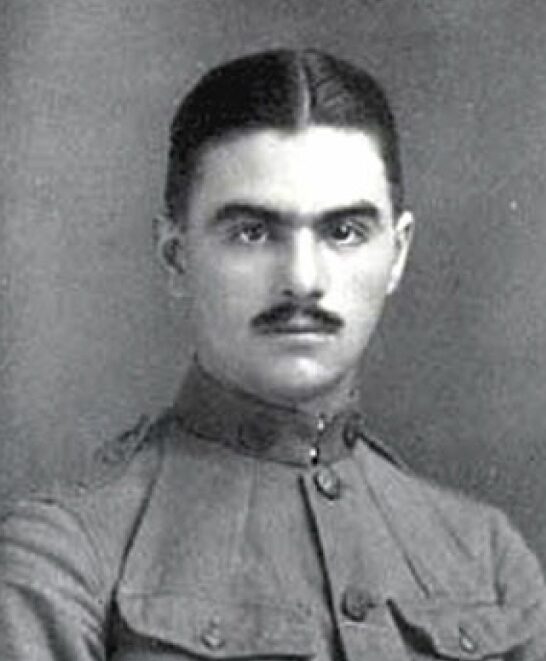
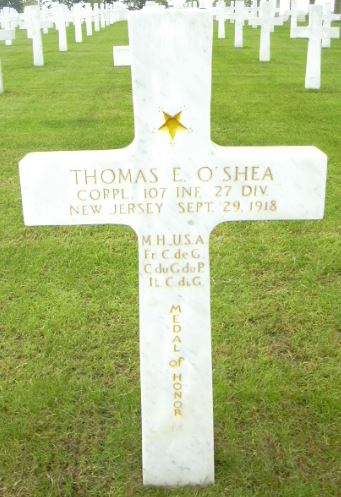
Citation: Becoming separated from their platoon by a smoke barrage, Cpl. O’Shea, with two other soldiers, took cover in a shell hole well within the enemy’s lines. Upon hearing a call for help from an American tank, which had become disabled 30 yards from them, the three soldiers left their shelter and started toward the tank under heavy fire from German machine guns and trench mortars. In crossing the fire-swept area Cpl. O’Shea was mortally wounded and died of his wounds shortly afterwards.
Ω 1st Lieutenant William Bradford Turner, Company M, 105th Infantry Regiment, 27th Infantry Division
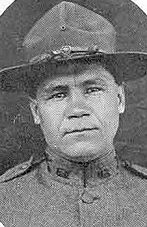
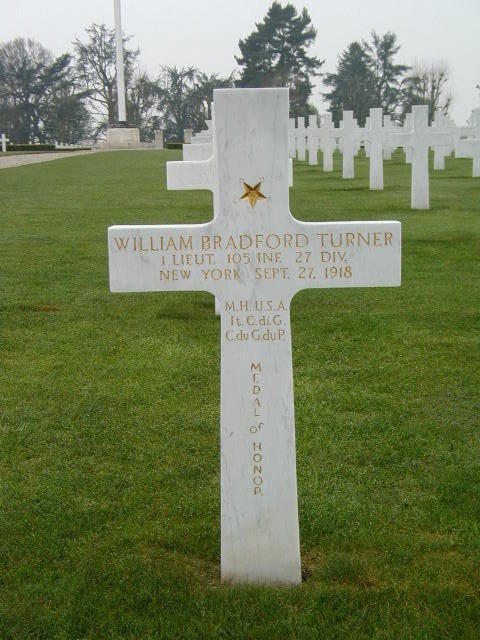
Citation: He led a small group of men to the attack, under terrific artillery and machine-gun fire, after they had become separated from the rest of the company in the darkness. Singlehandedly he rushed an enemy machine gun which had suddenly opened fire on his group and killed the crew with his pistol. He then pressed forward to another machine-gun post 25 yards away and had killed one gunner himself by the time the remainder of his detachment arrived and put the gun out of action. With the utmost bravery he continued to lead his men over three lines of hostile trenches, cleaning up each one as they advanced, regardless of the fact that he had been wounded three times, and killed several of the enemy in hand-to-hand encounters. After his pistol ammunition was exhausted, this gallant officer seized the rifle of a dead soldier, bayoneted several members of a machine-gun crew, and shot the other. Upon reaching the fourth-line trench, which was his objective, 1st Lt. Turner captured it with the nine men remaining in his group and resisted a hostile counterattack until he was finally surrounded and killed.
Private Michael Valente, Company D, 107th Infantry Regiment, 27th Infantry Division
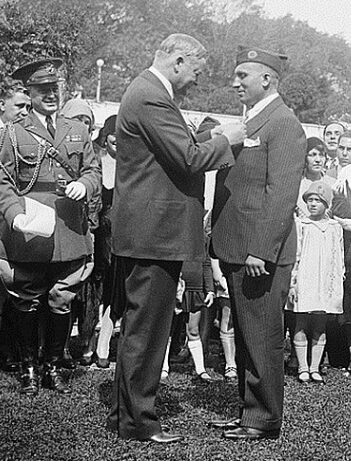
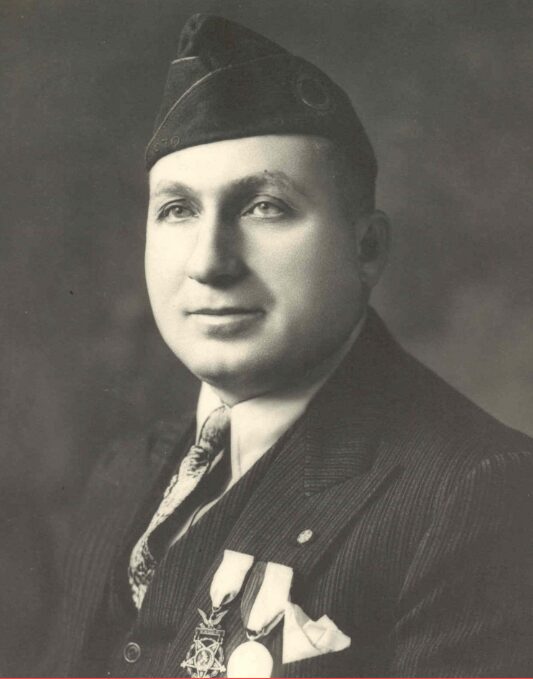
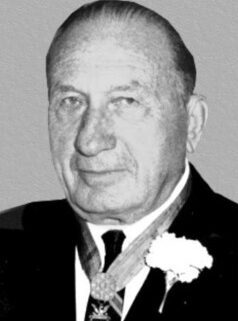
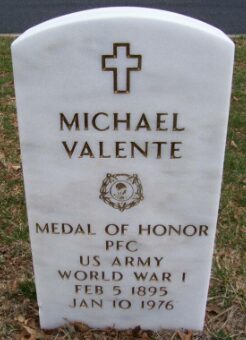
Citation: For conspicuous gallantry and intrepidity above and beyond the call of duty in action with the enemy during the operations against the Hindenburg line, east of Ronssoy, France, 29 September 1918. Finding the advance of his organization held up by a withering enemy machine-gun fire, Pvt. Valente volunteered to go forward. With utter disregard of his own personal danger, accompanied by another soldier, Pvt. Valente rushed forward through an intense machine-gun fire directly upon the enemy nest, killing two and capturing five of the enemy and silencing the gun. Discovering another machine-gun nest close by which was pouring a deadly fire on the American forces, preventing their advance, Pvt. Valente and his companion charged upon this strong point, killing the gunner and putting this machine gun out of action. Without hesitation they jumped into the enemy’s trench, killed two and captured 16 German soldiers. Pvt. Valente was later wounded and sent to the rear.
Sergeant Reidar Waaler, Company A, 105th Machine Gun Battalion, 27th Infantry Division
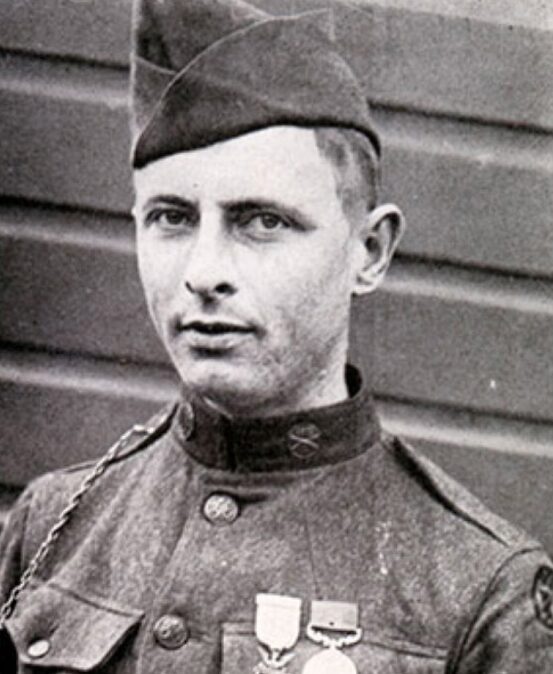
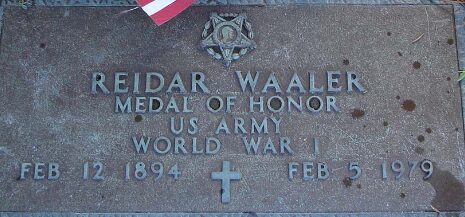
Citation: In the face of heavy artillery and machine-gun fire, he crawled forward to a burning British tank, in which some of the crew were imprisoned, and succeeded in rescuing two men. Although the tank was then burning fiercely and contained ammunition which was likely to explode at any time, this soldier immediately returned to the tank and, entering it, made a search for the other occupants, remaining until he satisfied himself that there were no more living men in the tank.
World War Two – Four awardees
Sergeant Alejandro Ruiz, Jr. 165th Infantry Regiment, 27th Infantry Division
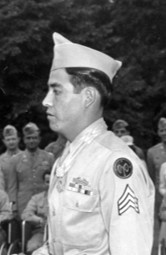
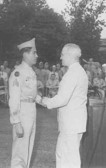
Rank and organization: Private First Class, U.S. Army, 165th Infantry, 27th Infantry Division.
Place and date: Okinawa, Ryukyu Islands, 28 April 1945.
Citation: When his unit was stopped by a skillfully camouflaged enemy pillbox, he displayed conspicuous gallantry and intrepidity above and beyond the call of duty. His squad, suddenly brought under a hail of machinegun fire and a vicious grenade attack, was pinned down. Jumping to his feet, Pfc. Ruiz seized an automatic rifle and lunged through the flying grenades and rifle and automatic fire for the top of the emplacement. When an enemy soldier charged him, his rifle jammed. Undaunted, Pfc. Ruiz whirled on his assailant and clubbed him down. Then he ran back through bullets and grenades, seized more ammunition and another automatic rifle, and again made for the pillbox. Enemy fire now was concentrated on him, but he charged on, miraculously reaching the position, and in plain view he climbed to the top. Leaping from 1 opening to another, he sent burst after burst into the pillbox, killing 12 of the enemy and completely destroying the position. Pfc. Ruiz’s heroic conduct, in the face of overwhelming odds, saved the lives of many comrades and eliminated an obstacle that long would have checked his unit’s advance.
On 26 June 1946, President Harry S. Truman presented Ruiz with the Medal of Honor in a ceremony held at the White House.
He spent his career in the Army. He also served in the Korean War and retired as a master sergeant in the mid-1960s. Ruiz often recounted the circumstances that led to his Army service. As a teenager working in odd jobs for a cattle farmer in Carlsbad, N.M., he had been asked to drive a cow to another farm when he became distracted by thoughts of a girlfriend. He drove, with the cow in tow, straight to Barstow, Texas, 122 miles away, to woo the young woman into marrying him. Ruiz was detained, and a judge told him that he would either be sent to jail for stealing the cow, or he could enlist in the Army to stay out of trouble. He chose the Army.
Ω Sergeant Thomas A. Baker, Company A, 1st Battalion, 105th Infantry Regiment, 27th Infantry Division
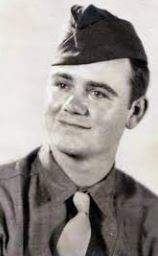
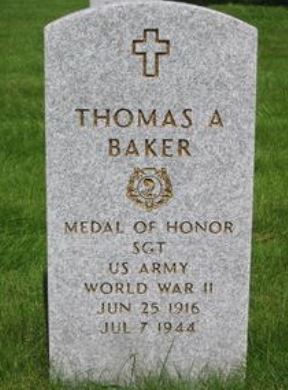
Gerald B.H. Solomon Saratoga National Cemetery
Citation: For conspicuous gallantry and intrepidity at the risk of his life above and beyond the call of duty at Saipan, the Marianas Islands, 19 June to 7 July 1944. When his entire company was held up by fire from automatic weapons and small-arms fire from strongly fortified enemy positions that commanded the view of the company, Sgt. (then Pvt.) Baker voluntarily took a bazooka and dashed alone to within 100 yards of the enemy. Through heavy rifle and machine gun fire that was directed at him by the enemy, he knocked out the strong point, enabling his company to as-sault the ridge. Some days later while his company advanced across the open field flanked with obstructions and places of concealment for the enemy, Sgt. Baker again voluntarily took up a position in the rear to protect the company against a surprise attack and came upon two heavily fortified enemy pockets manned by two officers and ten enlisted men which had been bypassed. Without regard for such superior numbers, he unhesitatingly attacked and killed all of them. Five hundred yards farther, he discovered six men of the enemy who had concealed themselves behind our lines and destroyed all of them. On 7 July 1944, the perimeter of which Sgt. Baker was a part was attacked from 3 sides by from 3,000 to 5,000 Japanese. During the early stages of this attack, Sgt. Baker was severely wounded, but he insisted on remaining in the line and fired at the enemy at ranges sometimes as close as 5 yards until his ammunition ran out. Without ammunition and with his weapon battered to uselessness from hand-to-hand combat, he was carried about 50 yards to the rear by a comrade, who was then himself wounded. At this point Sgt. Baker refused to be moved any further stating that he preferred to be left to die rather than risk the lives of any more of his friends. A short time later, at his request, he was placed in a sitting position against a small tree. Another comrade, withdrawing, offered assistance. Sgt. Baker refused, insisting that he be left alone and be given a soldier’s pistol with its remaining eight rounds of ammunition. When last seen alive, Sgt. Baker was propped against a tree, pistol in hand, calmly facing the foe. Later Sgt. Baker’s body was found in the same position, gun empty, with 8 Japanese lying dead before him. His deeds were in keeping with the highest traditions of the U.S. Army.
Ω Lieutenant Colonel William J. O’Brien 1st Battalion, 105th Infantry Regiment, 27th Infantry Division
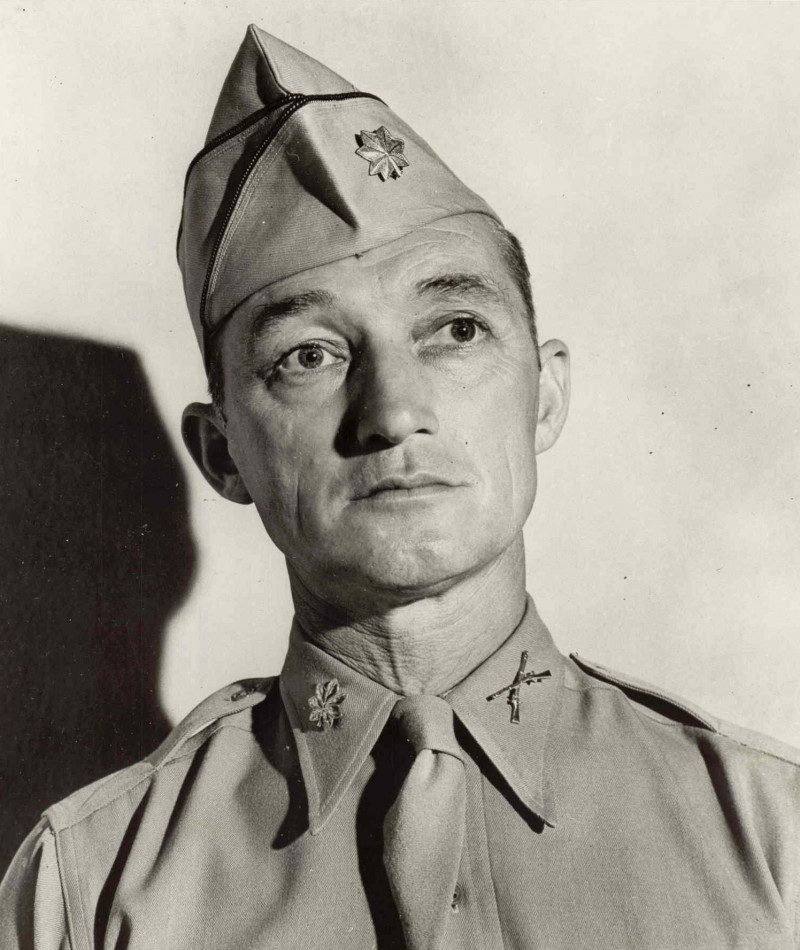
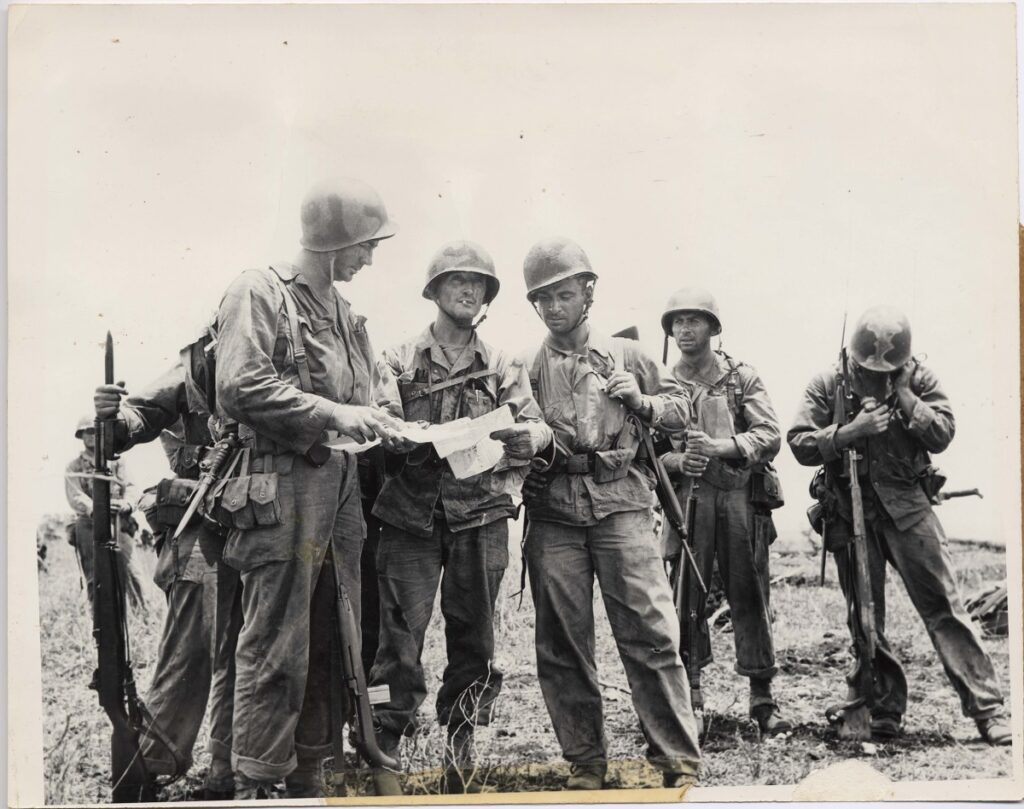
Citation: For conspicuous gallantry and intrepidity at the risk of his life above and beyond the call of duty at Saipan, Marianas Islands, from 20 June through 7 July 1944. When assault elements of his platoon were held up by intense enemy fire, Lt. Col. O’Brien ordered three tanks to precede the assault companies in an attempt to knock out the strongpoint. Due to direct enemy fire the tanks’ turrets were closed, causing the tanks to lose direction and to fire into our own troops. Lt. Col. O’Brien, with complete disregard for his own safety, dashed into full view of the enemy and ran to the leader’s tank and pounded on the tank with his pistol butt to attract two of the tank’s crew and, mounting the tank fully exposed to the enemy fire, Lt. Col. O’Brien personally directed the assault until the enemy strongpoint had been liquidated. On 28 June 1944, while his platoon was attempting to take a bitterly defended high ridge in the vicinity of Donnay, Lt. Col. O’Brien arranged to capture the ridge by a double envelopment movement of two large combat battalions. He personally took control of the maneuver. Lt. Col. O’Brien crossed 1,200 yards of sniper- infested underbrush alone to arrive at a point where one of his platoons was being held up by the enemy. Leaving some men to contain the enemy, he personally led four men into a narrow ravine behind, and killed or drove off all the Japanese manning that strongpoint. In this action he captured five machine guns and one 77-mm fieldpiece. Lt. Col. O’Brien then organized the two platoons for night defense and against repeated counterattacks directed them. Meanwhile he managed to hold ground. On 7 July 1944 his battalion and another battalion were attacked by an overwhelming enemy force estimated at between 3,000 and 5,000 Japanese. With bloody hand-to-hand fighting in progress everywhere, their forward positions were finally overrun by the sheer weight of the enemy numbers. With many casualties and ammunition running low, Lt. Col. O’Brien refused to leave the front lines. Striding up and down the lines, he fired at the enemy with a pistol in each hand and his presence there bolstered the spirits of the men, encouraged them in their fight, and sustained them in their heroic stand. Even after he was seriously wounded, Lt. Col. O’Brien refused to be evacuated and after his pistol ammunition was exhausted, he manned a .50-caliber machine gun, mounted on a jeep, and continued firing. When last seen alive he was standing upright firing into the Jap hordes that were enveloping him. Some time later his body was found surrounded by enemy he had killed. His valor was consistent with the highest traditions of the service.
Ω Captain Ben L. Salomon 105th Infantry Regiment, 27th Infantry Division
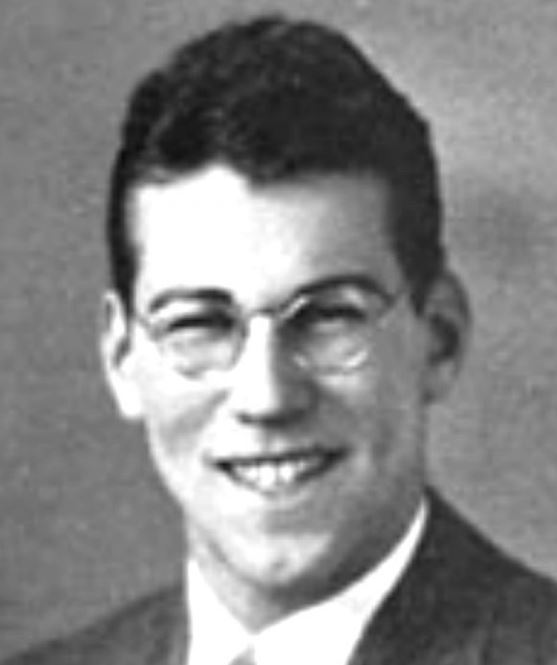
Citation: Captain Ben L. Salomon was serving at Saipan, in the Marianas Islands on July 7, 1944, as the Surgeon for the 2d Battalion, 105th Infantry Regiment, 27th Infantry Division. The Regiment’s 1st and 2d Battalions were attacked by an overwhelming force estimated between 3,000 and 5,000 Japanese soldiers. It was one of the largest attacks attempted in the Pacific Theater during World War II. Although both units fought furiously, the enemy soon penetrated the Battalions’ combined perimeter and inflicted overwhelming casualties. In the first minutes of the attack, approximately 30 wounded soldiers walked, crawled, or were carried into Captain Salomon’s aid station, and the small tent soon filled with wounded men. As the perimeter began to be overrun, it became increasingly difficult for Captain Salomon to work on the wounded. He then saw a Japanese soldier bayoneting one of the wounded soldiers lying near the tent. Firing from a squatting position, Captain Salomon quickly killed the enemy soldier. Then, as he turned his attention back to the wounded, two more Japanese soldiers appeared in the front entrance of the tent. As these enemy soldiers were killed, four more crawled under the tent walls. Rushing them, Captain Salomon kicked the knife out of the hand of one, shot another, and bayoneted a third. Captain Salomon butted the fourth enemy soldier in the stomach and a wounded comrade then shot and killed the enemy soldier. Realizing the gravity of the situation, Captain Salomon ordered the wounded to make their way as best they could back to the regimental aid station, while he attempted to hold off the enemy until they were clear. Captain Salomon then grabbed a rifle from one of the wounded and rushed out of the tent. After four men were killed while manning a machine gun, Captain Salomon took control of it. When his body was later found, 98 dead enemy soldiers were piled in front of his position. Captain Salomon’s extraordinary heroism and devotion to duty are in keeping with the highest traditions of military service and reflect great credit upon himself, his unit, and the United States Army.